
The Best Fruits & Vegetables To Grow In Hot Climates
If you're looking to grow your own fruit and vegetables in a warm climate, you're in the right place! First things first, we'll cover the advantages and drawbacks of warm conditions. Then, you'll discover the best plant species to grow during your warm and long growing period. By the end of this article, you'll be ready for a successful season!
No matter where you live in the world, you’ll quickly find out that you’re limited to growing certain species of plants depending on your location and climate. Sure, some species do well across many different climate zones thanks to human innovations that modulate environmental variables, such as greenhouses, but outdoors, many require specific conditions.
When it comes to warm regions, cultivators have a wealth of options to choose from. These areas typically receive a lot more sunlight and feature longer growing seasons—two variables that fuel the growth of more exotic plants that simply don’t perform well elsewhere. So, if you live in a warm place, count yourself lucky! Capitalise on this luxury by growing the delicious and productive plant species listed below!
Why grow fruits and vegetables in warm environments?
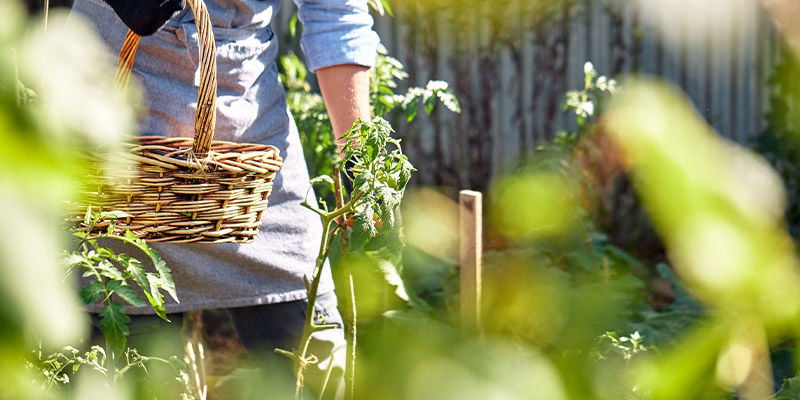
Many edible plants thrive in warm climates for a multitude of reasons. Chief among them, they simply either evolved or adapted to grow in these conditions. They are at home in regions that bathe them in sunlight and expose them to sustained, high daytime and nighttime temperatures.
Adaptations aside, hot weather regions possess innate characteristics that do plants a world of good. The main advantages of growing plants in warm areas include:
- Extended growing seasons: Warmer regions give rise to longer growing seasons, which equates to much earlier last frost dates, and much later first frost dates towards the end. This allows growers to start seeds and transplant seedlings much sooner, and even achieve successional harvests of plants that barely manage to reach harvest in colder areas.
- Faster growth: Temperature influences a host of physiological processes in plants. These include photosynthesis, respiration, germination, flowering, and transpiration. When exposed to favourable temperatures, heat-loving plants go into overdrive and grow extremely quickly.
- Higher yields: The pairing of long growing seasons and accelerated growth allows plants to reach full maturity before the end of the growing season. This translates to a long flowering, fruiting, and harvest period. Unlike in colder areas, growers rarely have to terminate their plants before reaping all they have to offer.
- Stress resistance: Heat-loving plants are at home in warm climates. With their environmental needs met, they are able to fulfil key physiological functions that help to resist certain pests and diseases that could easily gain a foothold in colder climates where plants aren’t performing optimally and can become stressed and immunologically compromised.
Don’t all plants perform well in hot climates?
Not all plants are built for heat, constant sunlight, and potentially dry conditions owing to suboptimal irrigation. While growers in warm regions are able to grow a host of varieties, they face restrictions when it comes to growing popular varieties that thrive in cooler regions within more extreme latitudes. For example, popular vegetables such as spinach and lettuce quickly bolt (go to seed) at the first sign of heat stress. Hot weather can also cause plants such as cauliflower to develop a bitter and undesirable taste.
With that said, growers in hot climates have the advantage of growing all year long. The vegetables mentioned above will likely grow just fine during winter and early spring, offering these cultivators the best of both worlds.
When to sow seeds?
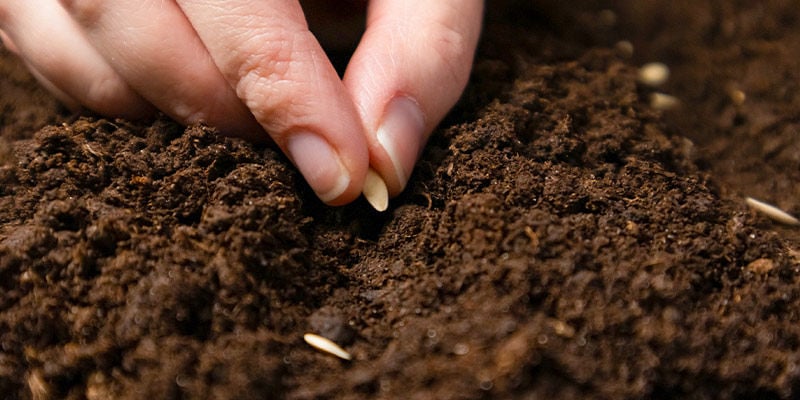
Growers in warm climates can sow and germinate seeds pretty much all year long. However, sowing the right variety at the correct time will lead to the best results. Aim to sow heat-loving plants that require a long growing season in the early spring. Doing so indoors will extend the growing season even more drastically. Establishing cucumbers, tomatoes, and chillies indoors in January or February means you’ll have well-established seedlings to transplant after the last frost passes.
However, growing in a warm climate comes with the advantage of not having to sow indoors or within the confines of the greenhouse. A naturally long growing season will allow you to largely direct sow outdoors early in the season. However, warm climates have unique challenges when it comes to sowing seeds, namely dryness.
If your area has frequent droughts, you may experience better results by raising seedlings in a polytunnel or another high-humidity environment to get seeds to germinate correctly without drying out.
You can also mark late summer as another sowing period in your calendar. Sowing the likes of lettuce, chard, and kale during this time will give you a chance to enjoy varieties that otherwise don’t grow well in warm summers. If you experience particularly frosty winters in your region, consider sowing and growing them in a greenhouse or polytunnel.
Possible plant problems
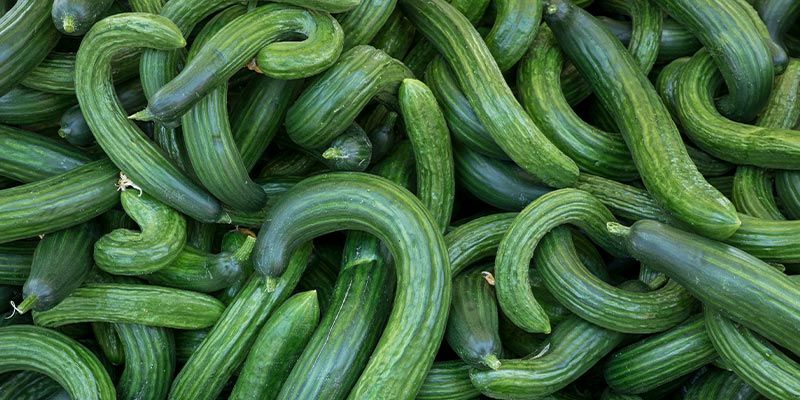
A warm climate offers a range of advantages, but it also comes with its own set of challenges. Some of the principal problems when growing plants in such an environment include:
- Aborted flowers: Higher temperatures can make it difficult for certain vegetable crops to transition from flowering to fruiting. Sustained temperatures of 32°C and higher can impact the pollen production of both tomato and pepper flowers and sometimes cause them to fall off the plant.
- Scalding: Direct sunlight and high temperatures can cause the scolding of maturing fruits. Not only can this impact their appearance, but it can leave them open to pest damage and disease. The problem becomes worse in drought conditions, leaving fruits shrivelled and barely edible.
- Deformed fruit: Cucurbits, such as melons, cucumbers, and squash, are in danger of producing deformed fruits in high temperatures. These plants require pollination to fruit, and their flowers remain open for shorter windows of time during hot weather. This can limit the chances of a pollinating insect visiting the flower, resulting in infertile fruit that often takes on a distorted shape and fails to develop properly.
- Drought: Improper watering and irrigation leaves plants thirsty during dry spells. Water plays a critical role in plant physiology, from photosynthesis to transpiration. Without enough water, plants quickly lose their turgidity, shrivel up, and die.
The best fruits and vegetables to grow in hot climates
Check you out, with all that newfound hot weather horticultural knowledge! Now, it’s time to put it into practice! The list of fruits and vegetables below will give you some of the best yields of any plant in a warm climate. Pick your favourite and start planning your garden for the upcoming season!
Tomatoes

Tomatoes originated in South America, but farmers first domesticated and cultivated them in Mexico somewhere around 500 BC. As you can imagine, this allows the plant to thrive in hot conditions. If you’ve ever tried to grow them in a cooler climate, you’ll know they need a greenhouse to reach anywhere near their true potential.
If you’re growing veg in hot weather, you’re lucky enough to grow them outside with little intervention. If you plan on starting them indoors, you can get away with popping seeds in a propagator on a windowsill as early as January. If you’d rather wait for things to warm up slightly, sow seeds into containers or directly in the soil, at a spacing of around 1m.
There are many different varieties to choose from, but all of them fall into two growing categories: Indeterminate and determinate. The former grow in a vine-like fashion, whereas the latter are more bushy in shape.
Position your tomatoes in full sun and feed them weekly with either liquid seaweed or fish emulsion to supply enough nitrogen during the vegetative phase and plenty of phosphorus and potassium during flowering and fruiting.
Pineapple
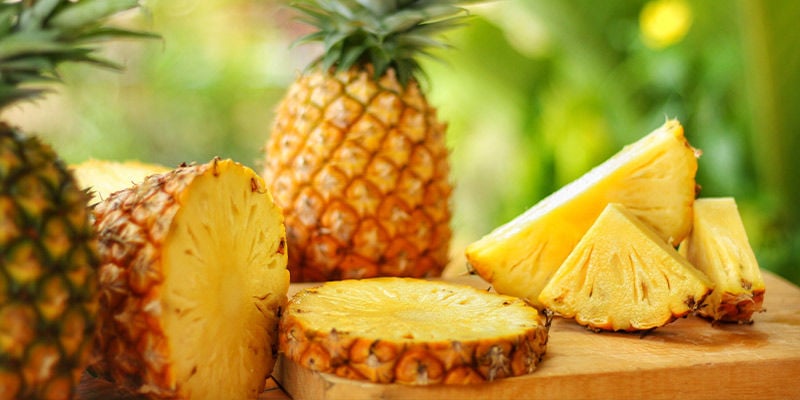
Pineapples thrive in warm, and ideally tropical, climates. They require constant warmth and good levels of humidity to produce a worthy yield. If you’re blessed with frequent hot weather, you can grow a pineapple plant without having to sow a single seed.
Instead, you can clone pineapples using a cutting from a fruit you purchase at the store. Simply remove the crown of the pineapple, and cut away any excess flesh until you reveal the root primordia, which looks like a ring of brown dots. Dry out the stalk over a couple of days and then place the crown in a glass of water and wait for it to root. Once the roots reach 5cm in length, transfer them to a 15cm pot filled with cacti potting soil that’s rich in perlite.
Pineapples take quite some time to grow. Place them in full sun and water regularly. Pot up your pineapple plant over the course of three years, or transfer it to a sunny spot in the ground out in the garden if you live in the tropics. Otherwise, you’ll need to place your plant under cover during the winter to keep it alive. Feed it weekly with liquid seaweed and, eventually, you’ll have yourself a well-earned harvest.
Sweetcorn
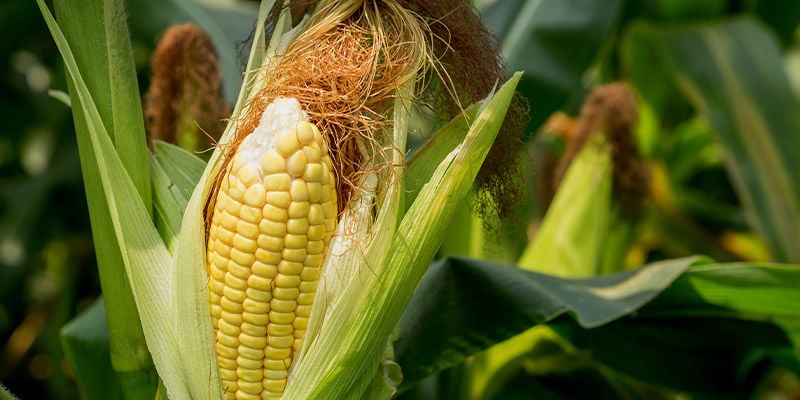
Sweetcorn has a rich history in North America, where indigenous American cultures developed it from field corn. Although many modern varieties do well in short growing seasons, warm climates allow growers to experiment with much taller and more productive cultivars that need many months to mature.
You’ll need to wait for the last frost to pass before sowing sweetcorn seeds. After choosing the cultivars of your liking, place the seeds in a glass of water to soak for 12 hours. Prepare a patch in your garden by amending your soil with plenty of organic matter. Sow seeds 2cm deep and spaced 45cm apart in each direction. Sow seeds in a block formation to boost the odds of successful pollination.
Keep your crop irrigated throughout the growing season, and feed with compost tea, liquid seaweed, and other organic liquid feeds once per week.
Watermelon

Not many harvests will leave you as satisfied as cutting a mature homegrown watermelon from its vine. You’ll need a large garden bed to accommodate the size of mature plants. We suggest starting seeds in module trays in the cover of a greenhouse early in the season. After developing their first set of true leaves, transplant them into their dedicated patch at a spacing of 1m. Consider setting up a drip irrigation system to keep the root systems well watered, while reducing dampness on the leaves.
You can trellis plants, or simply let them sprawl across the ground. Hit your plants with compost tea once per week to reduce the chances of mildew, and apply generous amounts of liquid fish extract to facilitate leafy growth. Harvest when the tendril closest to each fruit turns brown and dries up.
Cucumber

Cucumbers grow well in cold climates but need the protection of a greenhouse to produce a worthwhile yield. They’ll happily grow outside in warm regions, but excess moisture and rain will predispose them to contracting powdery mildew. If you’re in an area that experiences plenty of rain, consider growing them undercover.
After the last frost has passed, simply direct sow seeds at a depth of 2cm with a spacing of 30cm. Stake each plant, or sow seeds at the base of a trellis to give them plenty of vertical room to climb. Routinely prune off any side shoots to direct all of the energy to the fruits of the central stem. Water little and often and apply a liquid feed once every two weeks. Your fruits will ripen during mid-summer; prepare to pick them when they reach a size of around 15cm for the best texture and taste.
Okra

Okra ranks as one of the weirdest vegetables around. They feature a crunchy exterior and gooey interior. Okra plants need plenty of heat and sun, making them ideal for areas with a long and warm growing season.
Start your seeds around February by soaking them in a glass of warm water for two hours. Sow seeds into module trays and place them in a sunny position. Make sure to keep the soil moist during germination.
Transplant into a position that receives full sun at a space of 90cm. Insert a cane at the base of each plant to provide vertical support. Aim to keep their growing medium consistently moist throughout the growing season and administer a weekly high potassium liquid feed once flowers emerge. Your okra plants will start to produce pods from mid-summer; pick them frequently to encourage constant production.
Strawberries

Strawberries are one of the easiest fruit crops to grow, and they practically take care of themselves in warm climates. Start out with potted plants from the local nursery to get production off to a good start. They’ll thrive almost anywhere in your garden, but benefit most from a spot with partial shade. Transplant your young plants into soil rich in organic matter at a spacing of 40cm.
As your strawberries grow, they’ll produce runners that put out roots into the soil. After rooting, cut the stem from either side of the rooted segment and transplant it into a new bed to multiply your plants.
Chillies/Peppers
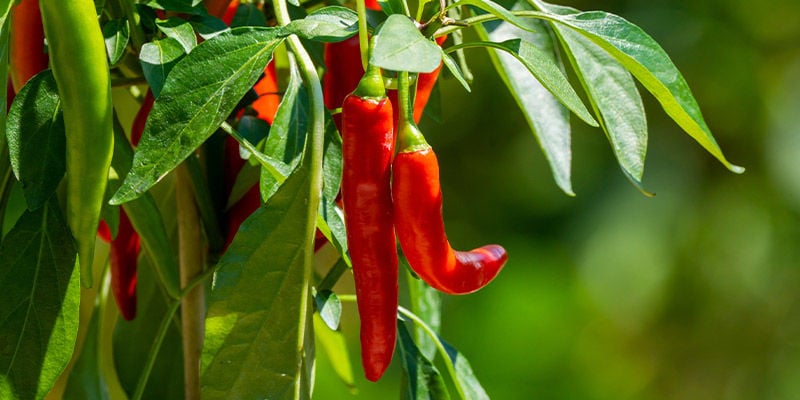
Chillies absolutely love the heat! Growers in cooler climates go to great efforts to grow them, but they’ll thrive outdoors in warmer areas. Start your seeds in January by soaking them in a glass of water for 12 hours. Transfer seeds into module trays and leave them on a sunny windowsill until the last frost has passed.
Pick an area of your garden that receives full sun. Prepare the ground and add plenty of compost and well-rotted manure. This will create the kind of fertile and well-draining soil that chillies and peppers love. Transplant early in the season at a spacing of 50cm. To keep your plants bushy and lower to the ground, top them just above the fourth node.
Apply a liquid feed of seaweed, fish emulsion or fermented plant juice once per week during the vegetative phase. Consider switching to a high-potassium fertiliser, such as fermented fruit juice, during the flowering phase. Pick fruit when they have become swollen, glossy, and have developed the natural colour expected of the cultivar.
Aubergine/eggplant
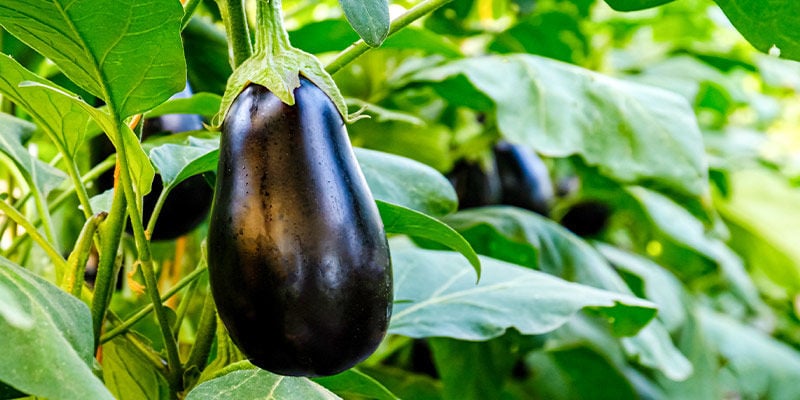
If you live in a warm climate, there are plenty of aubergine varieties to choose from, from deep purple, light purple, and even white. As close relatives to tomatoes and peppers, aubergines love bathing in heat all season long.
Start seeds in module trays in January and place them in a greenhouse in full sun if you have one at your disposal. A south-facing windowsill makes a good backup plan. Seeds can take up to 21 days to germinate, but a heat propagator can slash this time down to just seven days.
After the first set of true leaves develops, transplant at a spacing of 50cm. Mulch heavily with compost and stake each plant to give them some vertical support. Apply a high potassium fertiliser once a week as soon as flowers appear and make an effort to pinch out any side shoots. After 5–6 fruits start to develop, terminate any other flowers to direct growth towards select fruits to facilitate a good size. Harvest your aubergines from August onwards once they are ripe—indicated by a full colour and glossy appearance.
Feel the heat today!
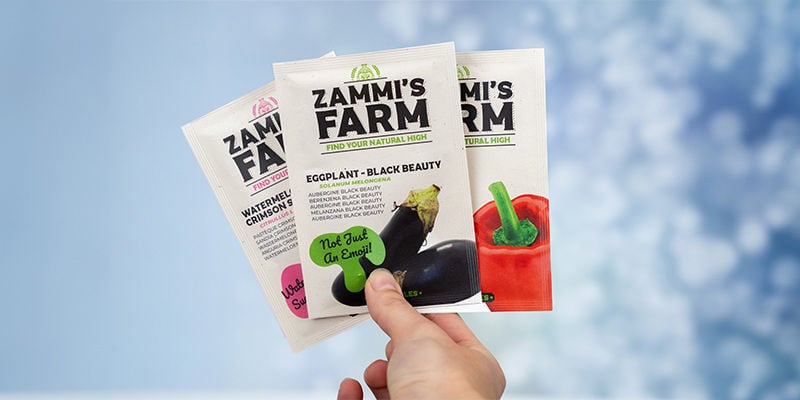
Congratulations! You’re now ready to become a pro at growing your own fruit and vegetables in a warm climate. You're aware of the benefits and drawbacks of this environment. More importantly, you know which plants thrive in hot weather and exactly how to grow them! Get ready to experience a season of abundance.
-
 5 min
3 August 2023
Top 10 Fruits To Grow At Home
Why bother heading to your local grocery shop when you can grow all of your favourite fruits at home? Whether you're in an apartment with a small balcony or staring out over acres of land, you'll...
5 min
3 August 2023
Top 10 Fruits To Grow At Home
Why bother heading to your local grocery shop when you can grow all of your favourite fruits at home? Whether you're in an apartment with a small balcony or staring out over acres of land, you'll...
-
 4 min
19 May 2023
Discover 10 Unique-Looking Vegetables
Do you want to sow some strange and novel fruits and vegetables in your garden this spring? Well, look no further—we’ve got you covered with this top 10 list of odd-looking plants to add some...
4 min
19 May 2023
Discover 10 Unique-Looking Vegetables
Do you want to sow some strange and novel fruits and vegetables in your garden this spring? Well, look no further—we’ve got you covered with this top 10 list of odd-looking plants to add some...
-
 5 min
16 March 2023
Top 10 Easiest Vegetables To Grow
Have you ever considered growing vegetables from home, but thought that your level of expertise or environment was insufficient for the job? Well, here at Zamnesia, we don't believe in such...
5 min
16 March 2023
Top 10 Easiest Vegetables To Grow
Have you ever considered growing vegetables from home, but thought that your level of expertise or environment was insufficient for the job? Well, here at Zamnesia, we don't believe in such...





 United States
United States











